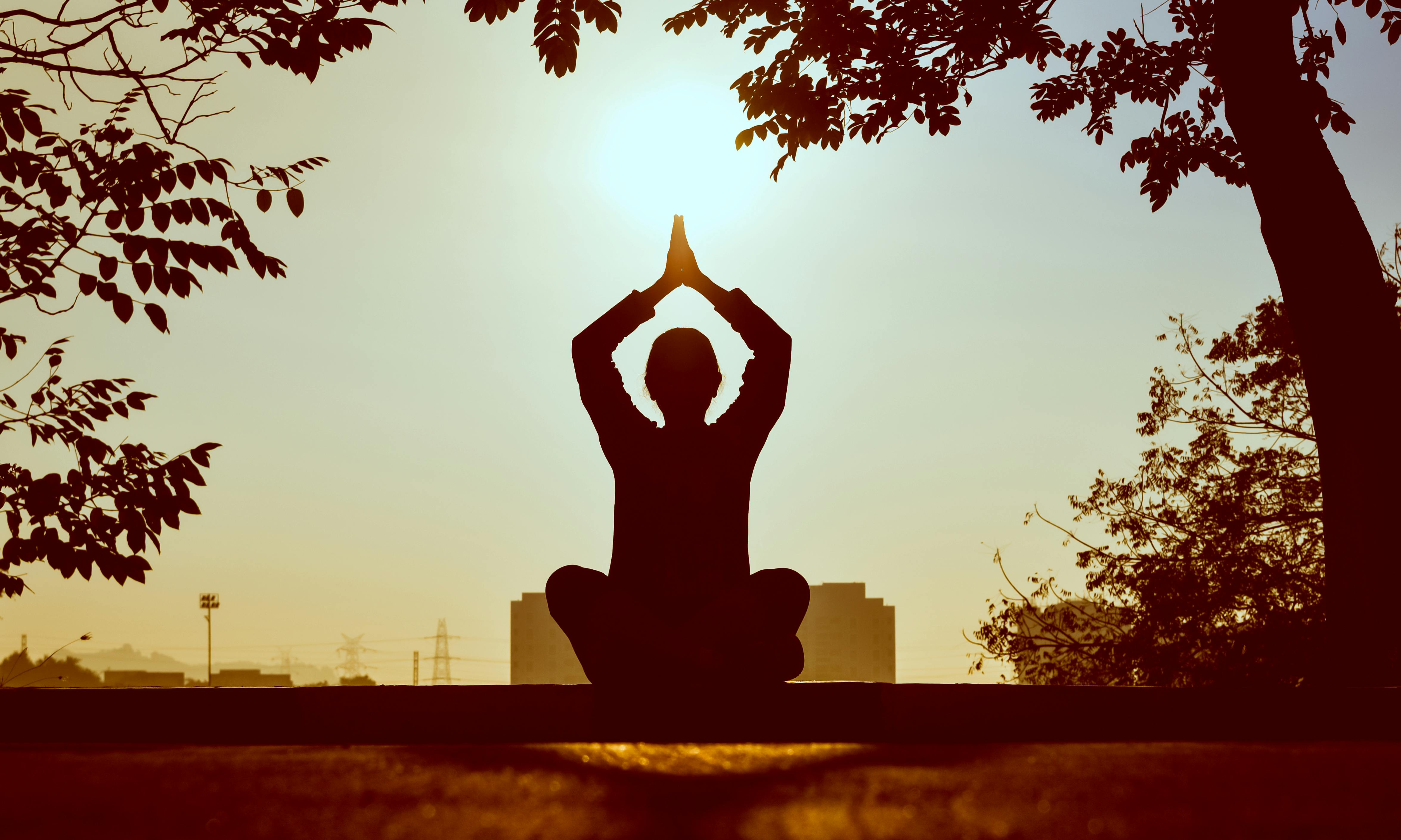In a world filled with constant demands and distractions, finding a moment of peace can feel almost impossible. Mindfulness meditation offers a way to pause, breathe, and reconnect with the present moment. While meditation might seem intimidating if you’re new to it, mindfulness meditation is actually one of the most accessible techniques out there. Studies have shown that regular mindfulness practice can reduce stress, improve focus, increase emotional resilience, and even enhance physical health.
This guide will walk you through everything you need to know about getting started with mindfulness meditation, from understanding its benefits to following a simple step-by-step routine. So take a deep breath, relax, and let’s dive in.
What is Mindfulness Meditation?
Mindfulness meditation is the practice of bringing your attention to the present moment without judgment. Unlike other forms of meditation that focus on emptying the mind or visualizing something specific, mindfulness meditation encourages you to simply observe your thoughts, emotions, and sensations as they arise, allowing them to come and go without becoming attached to them.
Core Elements of Mindfulness Meditation:
- Awareness of the Present Moment: Bringing your focus to the here and now, whether that’s through your breath, bodily sensations, or sounds around you.
- Non-Judgment: Observing without labeling thoughts, emotions, or sensations as good or bad.
- Acceptance: Letting go of resistance to whatever you’re experiencing in the moment, allowing it to simply be.
The Benefits of Mindfulness Meditation
Mindfulness meditation has been studied extensively for its positive impact on both mental and physical well-being. Research from Harvard Medical School shows that regular practice can improve focus, reduce anxiety, and lower stress levels. Here’s how mindfulness meditation can transform various areas of your life:
1. Reduces Stress and Anxiety
Mindfulness meditation activates the body’s relaxation response, reducing the production of cortisol, a primary stress hormone. Studies show that people who meditate regularly experience a 20% decrease in stress levels on average.
2. Improves Focus and Attention
Practicing mindfulness trains the brain to concentrate on one task at a time, which enhances focus and productivity. In fact, a study published in Cognitive, Affective, & Behavioral Neuroscience found that mindfulness meditators scored higher on attention tests than non-meditators.
3. Enhances Emotional Resilience
Mindfulness helps you become more aware of your emotions, making it easier to respond calmly rather than react impulsively. Regular practice can improve emotional resilience, helping you manage difficult emotions with greater ease.
4. Supports Physical Health
The mind-body connection is powerful, and mindfulness meditation has been linked to physical health benefits, such as reduced blood pressure, improved immune function, and even decreased symptoms of chronic pain.
5. Increases Self-Awareness and Compassion
Mindfulness teaches you to observe your thoughts and feelings without judgment, leading to greater self-compassion. Research shows that people who meditate regularly report a 30% increase in self-acceptance, which helps with self-confidence and personal growth.
Getting Started: A Step-by-Step Guide to Practicing Mindfulness Meditation
You don’t need special equipment or hours of free time to start a mindfulness practice. All it takes is a comfortable place to sit, a few minutes of your time, and an open mind. Here’s a simple guide to help you get started.
Step 1: Set Up a Comfortable Space
While you can meditate anywhere, creating a dedicated, quiet space can help reduce distractions and make your practice more enjoyable. Find a spot where you feel comfortable and won’t be disturbed for a few minutes.
Tips for Setting Up Your Space:
- Choose a place that’s quiet and free from distractions.
- Sit in a comfortable position, either on a chair or cushion.
- Place your hands in your lap or on your knees.
- Consider dimming the lights or lighting a candle if that helps you feel relaxed.
Step 2: Choose a Time and Duration
Start with a small, manageable time frame. As a beginner, you don’t need to meditate for hours to see benefits—even 5-10 minutes can make a difference. Set a timer on your phone so you don’t need to keep checking the clock.
Starting Out:
- Begin with 5 minutes and gradually increase the time as you feel more comfortable.
- Choose a time when you’re least likely to be interrupted—early morning or before bed works well for many people.
Step 3: Focus on Your Breath
Your breath is the anchor in mindfulness meditation. It gives you a point of focus and helps bring you back to the present moment whenever your mind wanders.
How to Focus on Your Breath:
- Take a deep breath in through your nose, letting your belly expand.
- Exhale slowly through your mouth.
- Let your breathing return to its natural rhythm, noticing the sensation of air moving in and out.
- Observe each inhale and exhale without trying to control or change it.
Pro Tip: If it helps, silently say “in” with each inhale and “out” with each exhale to keep your mind anchored on your breathing.
Step 4: Notice When Your Mind Wanders (and Bring it Back)
It’s completely normal for your mind to wander during meditation—that’s just what minds do! Instead of judging yourself or getting frustrated, simply notice when your attention has drifted, and gently bring it back to your breath.
How to Handle Wandering Thoughts:
- When you notice a thought, label it gently—“thinking” or “planning”—and then let it go.
- Bring your focus back to the feeling of your breath moving in and out of your body.
- Repeat this process every time your mind wanders. Over time, you’ll find it easier to stay focused.
Reminder: Remember, the goal isn’t to stop thoughts entirely but to observe them without becoming caught up in them.
Step 5: Do a Quick Body Scan (Optional)
A body scan is a technique where you mentally check in with different parts of your body, noticing any sensations, tension, or relaxation. This practice helps you become more aware of your body and encourages relaxation.
How to Practice a Body Scan:
- Starting at the top of your head, bring your awareness to each part of your body.
- Notice any sensations—whether warmth, tension, or relaxation—without judgment.
- Move slowly down through your neck, shoulders, arms, chest, belly, legs, and feet.
- Take a deep breath and notice if any tension has released.
Step 6: Close with a Moment of Gratitude
Ending your practice with a moment of gratitude can create a positive association with meditation and leave you feeling more centered. Take a few seconds to thank yourself for dedicating time to your well-being.
Gratitude Practice:
- Silently say to yourself, “Thank you for this time.”
- Acknowledge the effort you’ve made to take care of yourself.
Tips for Building a Consistent Mindfulness Practice
Consistency is key to seeing the full benefits of mindfulness meditation. Here are some tips to help make meditation a regular part of your life.
1. Start Small and Build Gradually
It’s better to start with a short, consistent practice than to try long sessions you might struggle to maintain. Aim for a few minutes each day, and gradually increase the time as you feel more comfortable.
2. Set a Regular Time
Whether it’s morning, midday, or night, find a time that fits easily into your routine. Having a set time each day can make it easier to develop a habit.
3. Use Guided Meditations
If sitting in silence feels daunting, try using guided meditation apps like Headspace, Calm, or Insight Timer. Guided meditations provide structure and help you stay focused, which can be helpful as a beginner.
4. Be Patient with Yourself
Mindfulness meditation is a skill that takes time to develop. It’s normal to feel restless or distracted, especially when starting out. Be patient and give yourself credit for each session, no matter how it goes.
5. Join a Meditation Group or Class
If you find it hard to stay motivated on your own, consider joining a meditation group or taking a class. Practicing with others can be inspiring and provides accountability.
Frequently Asked Questions about Mindfulness Meditation
Q: How often should I meditate?
A: There’s no set rule, but many beginners find that practicing 5-10 minutes a day is a good starting point. As you get more comfortable, aim to build up to 15-20 minutes a day for greater benefits.
Q: Can I practice mindfulness while doing other activities?
A: Absolutely! Mindfulness doesn’t require sitting still. You can bring mindfulness into daily activities like walking, eating, or even washing dishes by focusing on the experience without distraction.
Q: I find it hard to sit still. Is that normal?
A: Yes, it’s completely normal to feel restless or distracted. Try to approach meditation as a practice of observing these feelings without judgment. Over time, sitting still becomes easier as you build your mindfulness “muscle.”
Q: What if I fall asleep while meditating?
A: If you feel sleepy, it’s a sign your body needs rest. Meditation shouldn’t be forced, so if you fall asleep occasionally, don’t worry about it. Adjust your posture or meditate earlier in the day if drowsiness is common.
Final Thoughts: Embrace the Journey of Mindfulness
Mindfulness meditation is a journey, not a destination. It’s less about “achieving” anything and more about finding moments of peace, clarity, and self-awareness. As you continue to practice, you’ll notice shifts in how you respond to stress, how you handle emotions, and how connected you feel to each moment.
So, give yourself permission to take it slow and enjoy the process. Every time you sit down to meditate, you’re making a small, valuable investment in your well-being. Remember, mindfulness is a practice of self-compassion—each moment you spend in meditation is a gift to yourself, creating space for a calmer, more present you.
Meditate mindfully with Hapday, Your Wellbeing Assistant
Join the millions of people using Hapday. Improve overall wellness & sleep.




